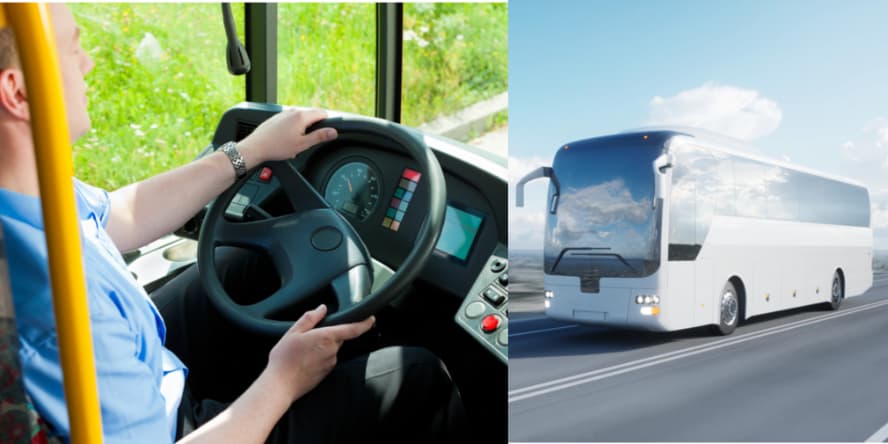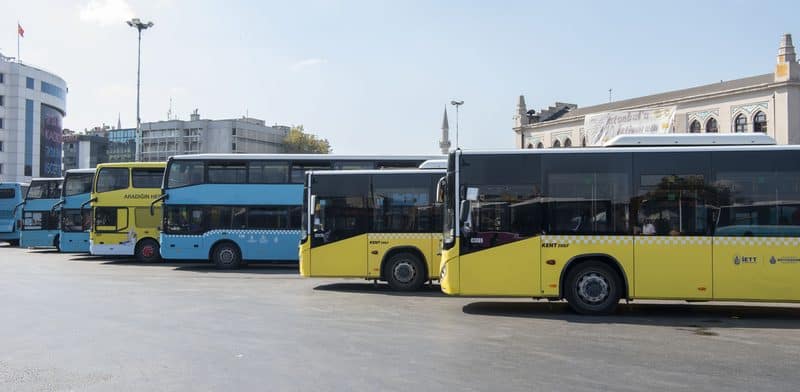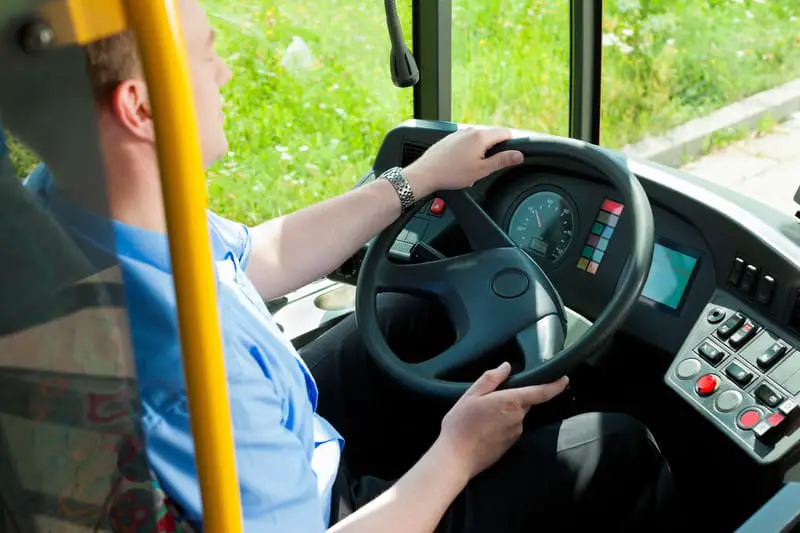
It is difficult not to be impressed when watching a skilled bus driver maneuvering the vehicle around small corners or other narrow spaces.
They seem to complete the task without breaking a sweat. The process is made easier with power steering and an automatic gearbox; however, it still requires skill borne from experience.
It is not hard to drive a bus. However, it does require the bus driver to exercise extreme caution when maneuvering the bus on busy roads with sharp corners. The bus driver also needs leadership, people management, and administration skills to deal with customers and ensure the bus runs smoothly.
Learning to become a bus driver is not difficult and involves obtaining the appropriate license and endorsements. These are obtained after a written test is completed and passed, followed by a driving test.
How Difficult Is It To Drive A Bus?
Three primary skills are required from bus drivers:
- The actual driving skills
- Leadership and people management skills
The Actual Driving Skills
The skills needed to drive a bus are similar to those required for a car, since the majority of controls are also identical to a private car.
The main difference relates to the following issues.
The Length Of Buses
Buses have varying lengths, and drivers must consider this when turning corners. The issue becomes more complicated with the longer Articulated Buses. Sometimes, the driver must encroach on the oncoming lane to maneuver around the bend.
You can learn more about buses length and how they fit in the same lane as cars in this post.
The Height Of Double Decker Buses
Double-decker bus drivers have to remain fully aware of the height of the bus and must always ensure that there is enough room under a structure for it to fit.
YouTube is littered with videos showing instances where buses and trucks have gone under bridges and other structures that are too low.
The bus always comes out worse in these situations and suffers considerable damage.
While the videos may be fun to watch, each incident has the potential to do substantial damage. It could even result in passengers being seriously injured or killed.
Leadership And People Management Skills
Being a bus driver requires more skills than simply maneuvering the vehicle and instead needs skill sets relating to the management of people.
Commercial buses driving around a city or across the country are filled with fare-paying passengers. To quote two cliches, the driver needs Solomon’s wisdom and Job’s patience to successfully meet the needs of the passengers.
Common situations which occur on buses include:
- Dealing with passengers who don’t have enough money or have the wrong ticket
- Calming down abusive passengers
- Helping blind people to find their bearings
- Helping children (or adults behaving like children) who may have missed a stop
- Providing compassionate assistance to disabled or mentally challenged passengers
- Driver must exercise extreme patience
Administration Skills
Dependent on the systems in the bus, the driver may be required to have the following skill sets:
- Accepting fares and returning the correct change
- Completing the bus logbook
- Filing daily reports with the employer
- Filing incident reports to the employer
- Notifying the maintenance department of any issues which need fixing on the bus
- Planning travel routes
- The bus driver will be asked questions about routes and other bus schedules, which must be answered intelligently
You can learn more about the daily tasks of a bus driver in this post.
The Different Types Of Buses

The following lists the different types of buses and coaches:
- Transit buses
- Coaches
- Intercity buses
- Trolleybus
- Electric buses
Transit Buses
Transit buses are used in towns and cities, and they come in four different formats, which are as follows:
- Single-decker Buses
- Double-decker Buses
- Rigid Buses
These are the most difficult busses to drive due to narrow streets and other traffic.
Coaches
Coaches are used for long-distance, intercity trips.
The customer-centric vehicles provide improved levels of comfort for the passengers and different gearing, which produces optimal power at the best gas consumption.
Coaches are not difficult to drive.
Intercity Buses
Intercity buses are used for travel between neighboring cities. They are less comfortable than coaches; however, the gearbox and engine units are geared for longer-distance trips.
Intercity buses are not hard to drive.
Trolleybuses
Trolley buses are used on fixed routes within cities.
The power is supplied by two overhead wires connected to trolleybus systems using spring-loaded trolley poles.
The trolley bus driver has to keep the bus under the electrical lines, making driving more challenging than other buses.
Electric Buses
Electric buses are a relatively new technology being pioneered in cities worldwide. They have sufficient range to work within metro areas.
The Controls On A Bus

The controls on a bus which are similar to a car, are listed below:
- The gear select lever
- Brake pedal
- Accelerator pedal
- Light switches
- Main beam/dip beam light switch
- Warning horn
- Turn signals
Controls that are unique to buses include the following:
- Door(s) opener
- Controls to manipulate the destination blinds(displays such as head signs, roll signs, or electronic dot matrix/LED signs)
- Fare-taking/verification equipment (Smart cards, single or multi-ride coupons, tickets, or cash)
- Visual and audible display showing when a passenger has pulled the emergency stop cord or bus stop request button
- Controls for the passenger information systems
- Controls for multimedia systems
- Controls for heating and air-conditioning
What Licenses Does A Bus Driver Need?
Although the bus driving permit rules differ across the states, generally, bus drivers need a CDL (Commercial Driver’s License). A CDL is endorsed to allow driving passenger vehicles (P) and school buses (S).
There are three classes of CDL license, A, B, and C, each of which conforms to a different vehicle weight.
A bus driver requires a class “B” CDL license to operate the bus within a state.
A coach driver who operates across state lines requires an “A” CDL license.
Bus drivers must meet the following requirements:
- To drive outside the state (Class A license), they must be at least twenty-one years old
- The driver must complete and pass a written examination
- The driver must pass a drug test
- The river must pass a physical exam
- The driver must pass a background check
Conclusion
It is not difficult to drive a bus. If the aspirant driver meets the age limit requirements and passes the written and physical test, they will be successful.
Most buses have controls that are very similar to a car. With power steering and an automatic gearbox, maneuvering is made much easier.
